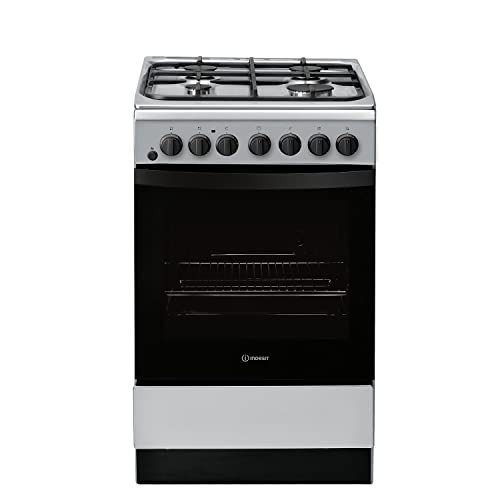The Little-Known Benefits Of Hob And Oven

Understanding Hobs and Ovens: The Essential Kitchen Appliances
In the realm of kitchen devices, couple of products are as vital as hobs and ovens. These devices form the backbone of cooking activities, making it possible for people to develop whatever from basic meals to elaborate feasts. Understanding the distinctions, types, and functionalities of hobs and ovens can substantially improve one's cooking experience. This short article explores the complexities of hobs and ovens, providing insights that accommodate both newbie and experienced cooks.
What Is a Hob?
A hob, typically described as a cooktop or stove top, is the flat surface on which pots and pans are put for cooking. Hobs are equipped with heating aspects that create the needed heat for cooking food. They can be found in different forms, consisting of gas, electric, induction, and ceramic choices. Each type uses distinct advantages and downsides.
Types of Hobs
Gas Hobs:
- Heat Source: Natural gas or lp.
- Advantages: Instant heat control and responsiveness, preferred by numerous chefs for exact cooking.
- Disadvantages: Requires a gas connection and can be less energy-efficient.
Electric Hobs:
- Heat Source: Electric coils or smooth glass-ceramic surface areas.
- Benefits: Generally simpler to clean up, even heating, and extensively readily available.
- Drawbacks: Slower to warm up and cool down compared to gas.
Induction Hobs:
- Heat Source: Electromagnetic currents.
- Advantages: Quick heating, energy-efficient, and only heats up the cookware, not the surrounding surface area.
- Downsides: Requires suitable pots and pans (ferrous products).
Ceramic Hobs:
- Heat Source: Electric and has a smooth glass surface area.
- Benefits: Sleek look, simple to tidy, and even heating.
- Drawbacks: Can take longer to warm up and cool off.
What Is an Oven?
An oven is an enclosed appliance that cooks food by surrounding it with dry heat. Hobs Sale can be standalone systems or integrated with hobs in a single device referred to as a variety. Ovens are versatile tools that can be used for baking, roasting, broiling, and more.
Types of Ovens
Traditional Ovens:
- Heat Source: Electric or gas.
- Advantages: Good for traditional baking and roasting.
- Disadvantages: Can have unequal heat distribution.
Convection Ovens:
- Heat Source: Electric or gas with a fan for flowing air.
- Advantages: More even cooking and much faster cooking times due to airflow.
- Drawbacks: Can be more expensive and may need modifications in cooking times.
Microwave Ovens:
- Heat Source: Microwaves.
- Advantages: Quick cooking and reheating; fantastic for defrosting.
- Downsides: Can not brown or crisp food well.
Steam Ovens:
- Heat Source: Steam generation.
- Advantages: Retains nutrients and moisture in food, healthier cooking alternative.
- Drawbacks: Longer cooking times and generally greater cost.
Key Differences Between Hobs and Ovens
While hobs and ovens serve the main purpose of cooking food, their performances and utilizes vary significantly. The following table sums up these crucial differences:
| Feature | Hob | Oven |
|---|---|---|
| Cooking Method | Direct heat | Confined heat |
| Main Use | Boiling, sautéing, frying | Baking, roasting |
| Heat Source | Gas, electric, induction | Gas, electric, steam |
| Cooking Area | Flat surface | Enclosed area |
| Cooking Time | Generally much faster | Varies based upon dish |
| Control & & Precision | Immediate and direct | Depend on settings and timers |
Benefits of Using Hobs and Ovens Together
Integrating using a hob and an oven can significantly boost the cooking procedure. Here are some advantages:
- Versatility: Different types of food can be cooked all at once.
- Performance: Using both permits various cooking methods, such as burning on the hob and baking in the oven.
- Time-Saving: Multi-tasking can significantly lower overall cooking time.
Upkeep and Care
To make sure the longevity of hobs and ovens, regular maintenance is essential. Here are some pointers:
For Hobs:
- Clean spills instantly to prevent staining.
- Use proper cleaners for particular materials (e.g., ceramic cleaner for glass-ceramic hobs).
- Routinely inspect gas connections for leaks (for gas hobs).
For Ovens:
- Wipe down the interior after each usage to avoid build-up.
- Use self-cleaning features if readily available, or use oven cleaners for tough stains.
- Regularly examine seals and gaskets for wear and tear (to keep heat performance).
FAQs About Hobs and Ovens
1. What is the best type of hob for a newbie cook?
Answer: A ceramic or electric hob is typically suggested for novices due to alleviate of use and cleansing.
2. Can I use any cookware on an induction hob?
Response: No, induction hobs need pots and pans made from magnetic products (e.g., cast iron or stainless steel).
3. How typically should I clean my oven?
Answer: It is advisable to clean your oven every couple of months, or more regularly if you utilize it frequently.
4. Is it better to bake in a convection oven?
Answer: Yes, convection ovens are frequently better for baking as they provide even heat distribution. Nevertheless, some fragile recipes might take advantage of traditional ovens.
Understanding the functionality and differences in between hobs and ovens is vital for any cooking lover. Whether one chooses the immediate heat of a gas hob or the precision of an induction cooktop, each type uses unique advantages. Similarly, ovens differ extensively in function, from traditional baking to steam cooking. By appreciating these appliances' functions in food preparation, cooks can enhance their culinary abilities and improve their kitchen activities.

